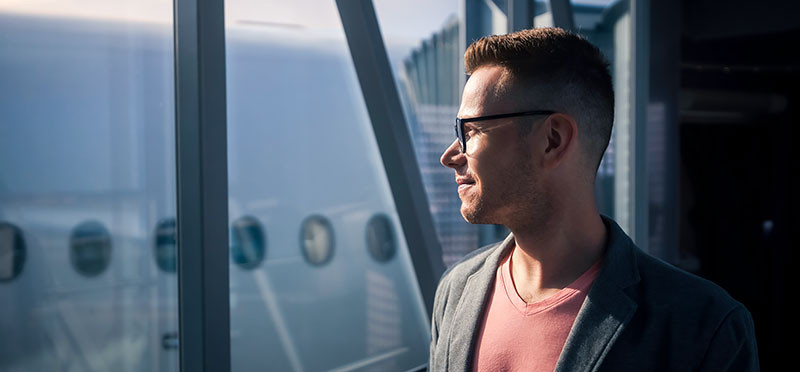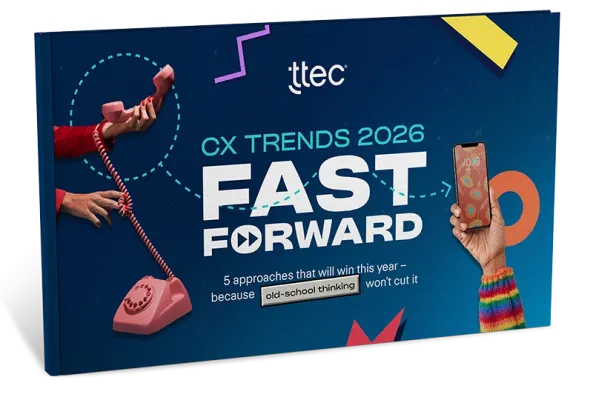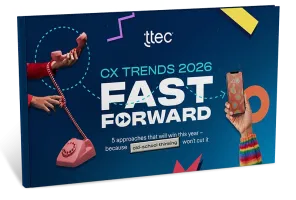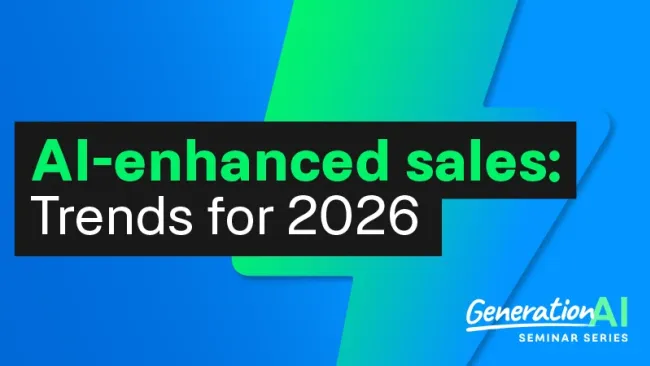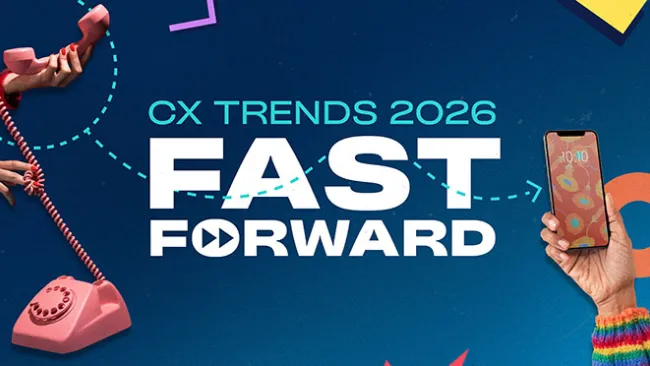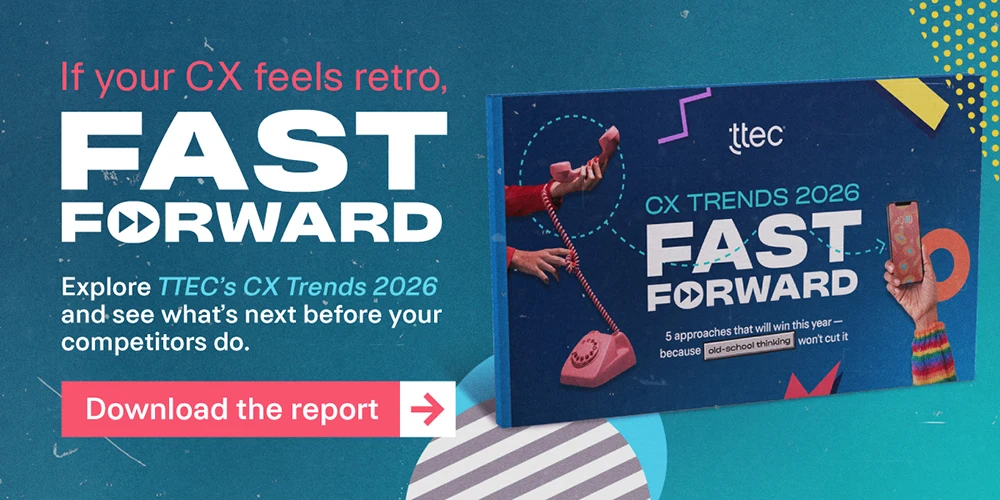Personalization isn’t just a nice-to-have in travel; it’s now a competitive necessity. In an industry built on emotion, choice, and timing, data-driven personalization can be the difference between a one-time booking and a lifelong customer.
From flights, to hotels, to rental cars and excursions, customers expect things to run smoothly when they’re traveling. They want easy interactions when it comes to researching and booking, and they expect quick resolutions when problems arise on the go.
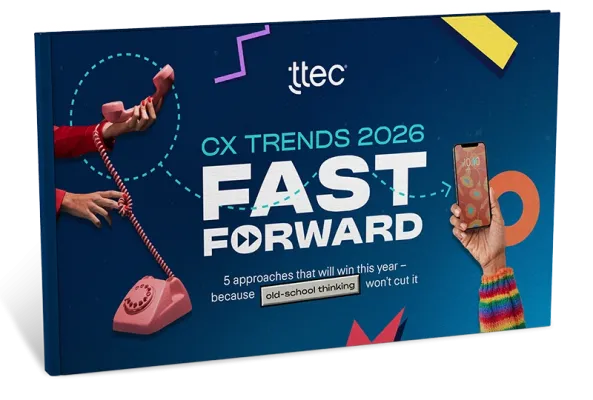
CX Trends 2026: Fast Forward
Our CX Trends 2026 Report dives into the innovations, insights, and strategies shaping the future of CX — so you can stay ahead while others catch up.

CX Trends 2026: Fast Forward
Our CX Trends 2026 Report dives into the innovations, insights, and strategies shaping the future of CX — so you can stay ahead while others catch up.

CX Trends 2026: Fast Forward
Our CX Trends 2026 Report dives into the innovations, insights, and strategies shaping the future of CX — so you can stay ahead while others catch up.
Personalized support drives loyalty and creates opportunities for upselling and cross-selling. Satisfied customers don’t just stay, they become advocates. And there’s a ripple effect: one promoter can influence up to 10 others, often family and friends, which amplifies the impact of every positive experience.
But certain personalization roadblocks persist for travel brands – fragmented data, legacy systems, and misused AI tools are holding many brands back.
That will change in 2026, when data-backed insights will take personalization in travel to new heights. It’s one of the top customer experience (CX) trends we’re forecasting in our trends report, CX Trends 2026: Fast Forward.
Personalization: The passport to happy travelers
Contact centers are treasure troves of data, putting more data at brands’ fingertips than ever. The challenge, though, is using it correctly. That’s where the right people, technology, and CX strategy can help.
The potential ROI for personalization is climbing, as customers increasingly favor brands that tailor recommendations, offers, services to their unique preferences and needs. Customers are willing to spend more on a trip if they think it will give them a better experience.
- 65% of travelers say they expect personalized experiences during their trips
- 86% say they’ll pay more for better customer experience
- 78% say personalized experiences significantly influence their booking choices
- 68% say they favor hotels that deliver standout, personalized experiences over hotel loyalty rewards programs
- 85% of hoteliers say personalization could help them deliver more than 5% in incremental revenue
In today’s travel industry, personalization is no longer optional, it’s a competitive necessity. Whether the interaction is powered by AI or handled by a live associate, the ability to tailor the experience to the customer’s context and intent is critical.
It’s time to go beyond merely knowing who customers are and truly understand the importance and urgency of their inquiries and making. Then, make relevant information visible and actionable for the next best step.
Personalization takes flight into precision
Travel brands have access to more data points than ever before. Customers know this and expect you to use it to their benefit. Nearly two-thirds of customers expect better personalization as technology advances, and most consumers believe brands should use the data they collect about customer to personalize their experiences.
Brands that harness clean, connected data will deliver experiences travelers actually want — not just tolerate. In 2026, personalization goes beyond guesses to become predictive and precise, understanding where each traveler is on their journey and tailoring every interaction, from marketing to in-destination service.
In the coming year, we expect to see travel brands tighten the links between data platforms and frontline systems so insights can inform interactions in real time. As brands mature along the data curve, they’ll use AI-driven intelligence to take personalization to the next level, turning every touchpoint into an opportunity to engage more meaningfully.
Having the right insights in hand (and knowing what to do with them) empowers brands to deliver better and faster resolutions, build stronger brand loyalty, and uncover upsell and cross opportunities during customer service interactions.
Personalization can start before a customer even speaks to an associate. Routing decisions, for instance, should prioritize customer value, not just queue position. High-value customers — those who spend more or have long-term potential — deserve faster, higher-quality service. This often means minor policy flexibility (small concessions today can deliver 10x future value by creating brand stickiness) and strategic prioritization that treats your top spenders as VIPs.
The future of CX starts now
Personalization isn’t just about solving problems; it’s about building emotional equity. When customers feel understood and valued, they advocate for your brand organically, influencing networks far beyond their own transactions.
The evolution of personalization is just one trend we’re forecasting for 2026. Technology is evolving, customer expectations are rising, and economic uncertainty is rewriting the rules. It can be difficult for cut through the confusion and prioritize what matters. Winning CX is going to look different in 2026 and beyond.
Dive into our full report, “CX Trends: Fast Forward,” to see what’s next for CX and how your brand can stay ahead of the curve with actionable insights for the year ahead.

